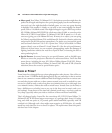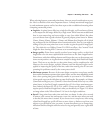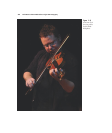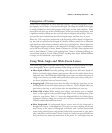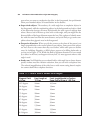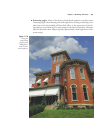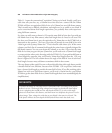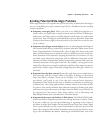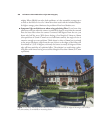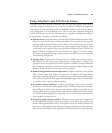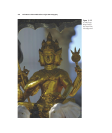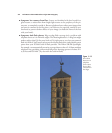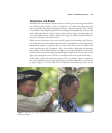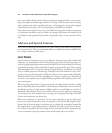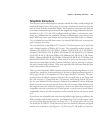
mighty Nikon SB-800 can solve both problems, as it has zoomable coverage up to
as wide as the field of view of a 14mm lens when used with the included adapter.
Its higher vantage point eliminates the problem of lens hood shadow, too.
■ Symptom: light and dark areas when using polarizing filter. If you know that
polarizers work best when the camera is pointed 90 degrees away from the sun and
have the least effect when the camera is oriented 180 degrees from the sun, you
know only half the story. With lenses having a focal length of 10mm to 18mm
(the equivalent of 15mm-27mm lens on a full-frame camera), the angle of view is
extensive enough to cause problems. Think about it: when a 10mm lens is pointed
at the proper 90-degree angle from the sun, objects at the edges of the frame will
be oriented at 135 to 41 degrees, with only the center at exactly 90 degrees. Either
edge will have much less of a polarized effect. The solution is to avoid using a polar-
izing filter with lenses having an actual focal length of less than 18mm (or 27mm
equivalent).
David Busch’s Nikon D7000 Guide to Digital SLR Photography368
Figure 11.11 Many wide-angle lenses cause lines to bow outwards towards the edges of the image; with a fisheye
lens, this tendency is considered an interesting feature.



